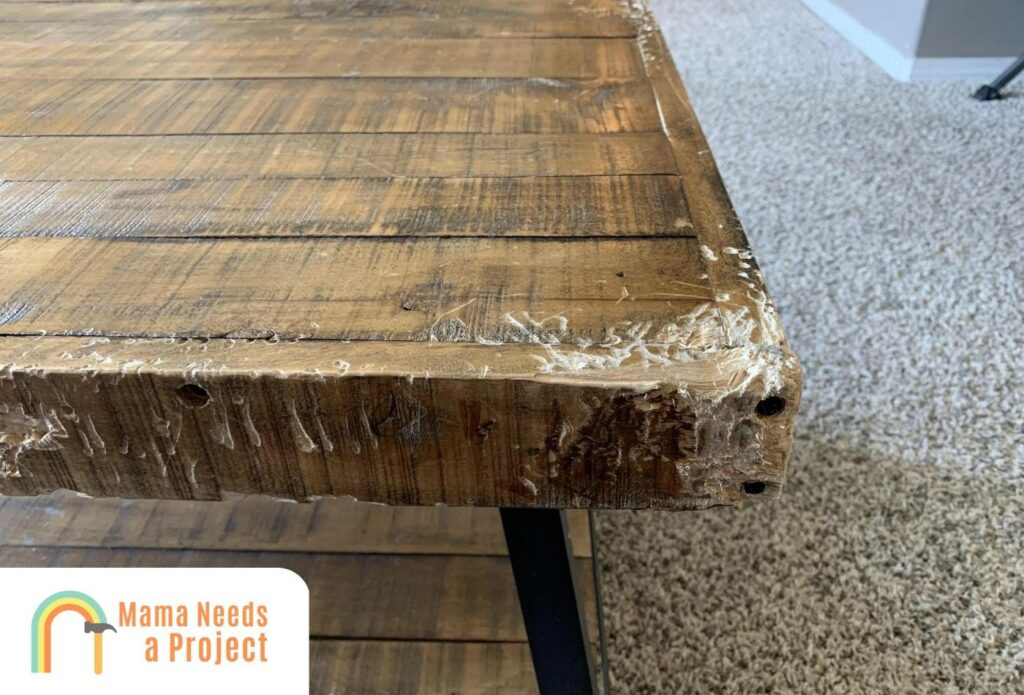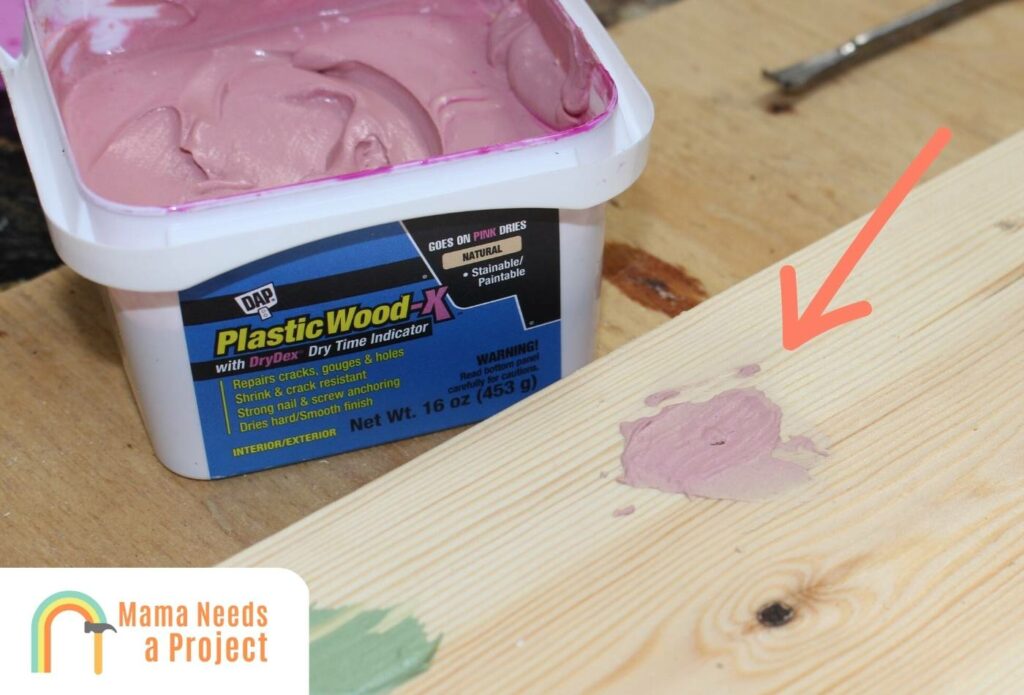How Long Does it take Wood Putty to Dry? (Fast Drying Tips!)
Wood putty is a convenient product that I use all of the time on my woodworking and DIY projects. You can use it to fill holes, small gaps, and other defects in your projects when finishing wood.
But what’s the drying time of wood putty? And how long should you wait before sanding?
In this post, I’ll explain exactly how long it takes for wood putty to dry, some tips to make wood putty dry faster, and much more.
So if you’re planning to use wood putty for an upcoming woodworking project, this is information you can’t miss!
Water-based wood putty usually takes an hour or two to dry. Oil-based wood putty, on the other hand, takes four to six hours to dry. DAP’s Plastic Wood, a popular kind of wood putty, takes six hours to dry. No matter what kind of wood putty you use, you should let it dry for at least 24 hours before sanding.
What Is Wood Putty?
Wood putty, sometimes referred to as plastic wood, is a substance that’s used to fill a range of wood defects, such as gaps, nail holes, small cracks, and knots.
It’s made with fine wood dust (not saw dust), a binder, a thinner, and a pigment.
As far as binders go, wood putty can include water, lacquer, calcium carbonate, or linseed oil.
The wood putty that’s used to fill defects in large wood surfaces, like hardwood floors and tabletops, is slightly different, as this putty contains silica instead of wood dust.
It’s slightly different than wood filler in that they have a different consistency and dry differently.
A variety of wood putties are manufactured by a handful of brands, but the kind most people are familiar with, Plastic Wood, is manufactured by DAP Products – which I love.
It’s possible to make your own wood putty using fine sanding dust and wood glue or shellac. The reason why sawdust isn’t used is because it’s too coarse.
Because of the chemicals that are in wood putty, you shouldn’t put this on raw wood. The chemicals can damage the wood, which would be the opposite of what you’re looking to achieve when using wood putty.
However, if you put a layer of paint or stain down first, then you can apply some wood putty, as the paint or stain will act as a barrier and prevent the putty from damaging the wood.
What is Wood Putty Used For?

Every wood surface has minor imperfections, like small holes and cracks, and often wood putty is used to fill these holes and create a uniform, smooth surface.
Would putty can be used on furniture, floors, stairs, doors, windows—essentially anything made of wood.
That said, you may have a hard time finding a putty that perfectly matches the wood surface you’re applying it to, as there are only so many colors available.
Wood putty is often chosen over wood filler, especially when a malleable filler is needed. It’s also a go-to filler for a range of outdoor applications.
Unlike wood filler, wood putty doesn’t harden completely, which means it won’t crack from sustained exposure to temperature and humidity fluctuations.
Check out these wood glue vs wood filler differences so you can know when to use each!
How Long Does it Take Wood Putty to Dry?
Water-Based Wood Putty
It only takes water-based wood putty about one to two hours to dry.
Still, you should let the wood putty harden for at least 24 hours before you start sanding. If you sand wood putty before it dries completely, it’s likely you’ll take some of the putty out of the holes, meaning the seal won’t be 100% after you’re done sanding.
Additionally, you’ll clog your sand paper with the wet putty, and this can be a pain to remove, especially if you’re sanding with fine-grit sandpaper (which you should be).
If it’s humid when you apply water-based putty, expect the drying process to be elongated by a couple hours. Again, waiting 24 hours and playing it safe is the way to go.
The reason why water-based wood putty dries quicker than oil-based wood putty is because it’s much less viscous.
Plus, it’s easier to expedite the drying process with a hair dryer or heat gun when you use water-based putty. But keep in mind that you could negatively affect the putty if you overuse either tool.
Oil-Based Wood Putty
Oil-based wood putty, on the other hand, usually takes four to six hours to dry completely.
But unlike water-based putty, the drying process for oil-based putty won’t be elongated just because there’s a lot of moisture in the air, which means you can use this in a tropical environment without having to worry about it taking forever to dry.
Plus, oil-based wood putty doesn’t shrink like its water-based counterpart, so it’s much better for larger wood surfaces, like floors, doors, and tabletops.
And because it’s non-shrink, you’ll only need to fill holes once, whereas with water-based putty you may have to apply multiple thin layers over several hours to get an effective seal.
Again, you should wait at least 24 hours before sanding oil-based wood putty. Sanding wood putty too early, especially in this case, drags out the process and leads to a mess more than anything else.
Factors That Influence Drying Time
Humidity and Temperature Levels
For the best results, apply wood putty when the temperature is 40°F or higher. If you apply when the temperature is below 40°F, there’s a greater chance of the wood putty not drying properly.
Also, if it’s especially humid when you go to apply wood putty, there’s a chance the wood putty won’t dry properly, or it may just take especially long to dry.
And remember: humidity negatively affects water-based putty—not oil-based.
However, wood putty does withstand frequent fluctuations in both temperature and humidity quite well, whereas wood fillers don’t.
Amount of Wood Putty Used
The amount of wood putty used also plays a large role in determining how long it takes the wood putty to dry.
Specifically, if you use more wood putty than is necessary, there’s a good chance it won’t dry completely, and when you go to sand you’ll have this unfortunate realization.
You should only put in the necessary amount of putty to fill wood cracks. That said, if you’re using water-based, you can overfill a little bit to compensate for the inevitable shrinkage that occurs when this kind of wood putty completely dries.
The Material Being Filled
Wood putty can be applied to pretty much all woods and wood-based materials, but it doesn’t do so well with moist and oily woods because it can’t set in them well.
For these woods, wood filler is better, mainly because wood filler hardens, regardless of how moist or oily the wood is.
Also, wood filler is absorbed into the wood’s pores, so it has an easier time setting; wood putty, on the other hand, sits atop the outer layer of the wood.
And in the case of moist and oily woods, it’s best to go with an oil-based wood filler over a water-based wood filler, as water-based products sometimes don’t mix well with moist and oily woods.
Need to fill large holes? Check out these best wood fillers for large holes!
Method of Application
To ensure the wood putty dries completely and as quickly as possible, you need to apply it properly.
Use a putty knife to fill holes and cracks with wood putty. Apply a thin layer to minor holes and cracks and a thick layer to deeper imperfections.
Applying thick layers shouldn’t be your default. After all, if you put too much wood putty on, chances are it’s going to be a pain to remove later, especially if it had time to dry.
If you want the drying process to be as quick as possible, use the absolute minimum amount of wood putty necessary to fix the blemishes. But before you go this route, know you could leave the wood vulnerable by not applying enough wood putty.
How to Make Wood Putty Dry Faster
Use Wood Putty Hardeners
Wood putty hardeners come in gel, powder, and liquid form, and these can be added to wood putty to expedite the drying process. Not only do hardeners speed up the drying—they also strengthen the putty and make the wood surface stronger overall.
Using a Hair Dryer or Heat Gun
You can use either a hair dryer or a heat gun to speed up the wood putty drying process.
But you need to be careful when applying direct heat. While this does make wood putty dry faster, it can also cause the wood putty to set improperly if too much is applied.
Give the putty, whether it’s water-based or oil-based, an hour or two to dry naturally before you use a hair dryer or heat gun on it.
Don’t use either tool for longer than five minutes.
Wood Putty Drying Time vs. Wood Filler Drying Time

Wood fillers dry much faster than wood putties, and that’s one reason why many woodworkers use wood filler over putty in situations where either could be used.
It takes 30 minutes to an hour for most water-based wood fillers to dry, and oil-based wood fillers dry in an hour or two.
Of course, if the temperature is too low, it’s too humid, or the wood surface is either moist or oily, it’ll take longer for wood filler to set and completely dry. But even in these scenarios, wood filler dries much faster than wood putty.
Wood filler also dries quicker than DAP’s Plastic Wood (which dries in three to six hours).
Part of the reason why would fillers dry quicker than wood putty is because wood fillers get into the wood’s pores, and from there they’re absorbed by the wood fibers.
How to Apply Wood Putty
When using wood putty, there are a few essential steps that are easy to overlook.
First, you’ll want to find the right putty for your job. You can opt for an oil or water based putty depending on your needs.
Next, it’s critical to clean the surrounding area before applying putty on your wood surface. You’ll want to remove dirt, grime, or any oils on the wood so it can better adhere to the wood.
You can apply the first layer to the area with a putty knife or a craft stick until the gap is completely filled.
Next, you’ll want to wait for the putty to dry.
If necessary, you can apply another layer if the putty has shrunk.
Finally, you’ll need to let it dry before giving it a proper sanding and wiping away any dust.
What’s a Good Quick-Drying Wood Putty?
The best quick-drying wood putty I’ve used is Minwax wood putty. I’m also a fan of DAP’s Plastic Wood too.
I’ve found that putting either product out in the sun is an effective and safe way to speed up the drying process. In other words, the sun’s heat speeds up the drying time without over-drying the putty.
FAQs
How long does putty take to dry on wood?
It usually takes water-based wood putty one to two hours to dry on a wood surface. Oil-based putty takes four to six hours, while DAP’s Plastic Wood takes three to six hours. All of the aforementioned putties take longer to dry (by about an hour or so) when applied to moist or oily woods.
How long does wood putty last?
If applied properly, wood putty can last longer than 20 years.
Plus, wood putty that’s in a dry environment most of the time will last longer than wood putty that’s constantly exposed to the elements.
The main reason why wood putty lasts so long is because it’s flexible, unlike wood filler which doesn’t last nearly as long (even when properly applied).
Final Thoughts
The drying time for wood putty is around two to six hours depending on the type of wood putty you use. You should always give it at least 24 hours to dry before sanding
To make it dry faster you can add a hardener or add some heat to the area.
There are a few things that can affect the drying time of your putty, so be sure to work in moderate conditions for the fastest drying time.



